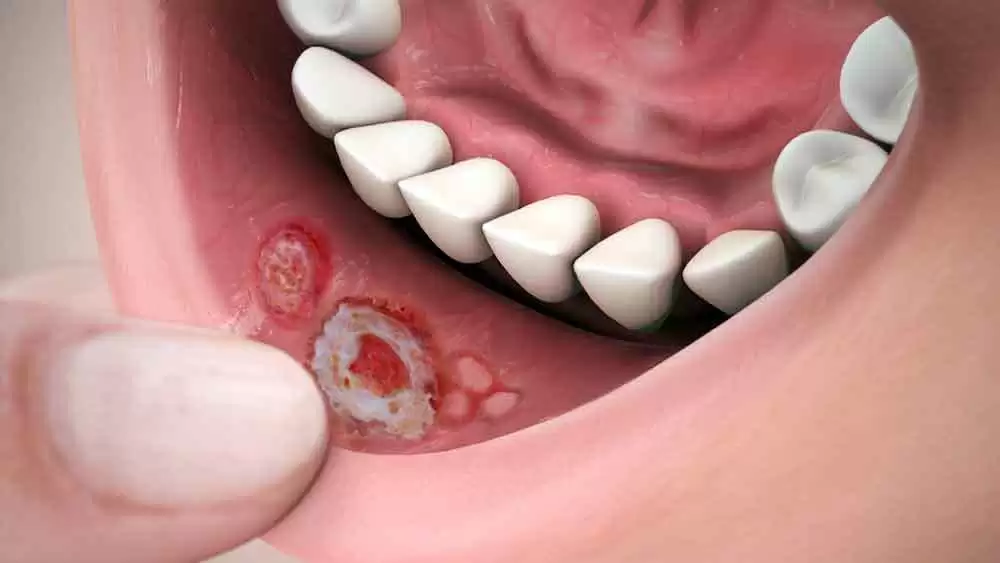Celiac.com 04/21/2025 - Celiac disease is an autoimmune disorder triggered by gluten consumption, leading to damage in the small intestine. While it is widely known for causing gastrointestinal symptoms, it can also manifest in other parts of the body, including the mouth. This study aimed to explore the prevalence of oral symptoms in adults with celiac disease, both at the time of diagnosis and while following a gluten-free diet. Additionally, the study investigated factors that might increase the likelihood of these oral manifestations, such as gender, diagnostic delays, and the presence of abdominal symptoms.
Study Design and Participants
The research involved 873 adults diagnosed with celiac disease and 563 non-celiac controls. Participants were recruited nationwide through advertisements and celiac disease patient organizations. All celiac patients had confirmed diagnoses through small bowel biopsies or skin biopsies for dermatitis herpetiformis, a skin condition linked to celiac disease. The control group consisted of individuals without celiac disease, confirmed through repeated antibody testing. Both groups were interviewed using structured questionnaires to assess gastrointestinal symptoms, quality of life, and oral health issues such as dental enamel defects, recurrent mouth ulcers, and tongue pain (glossodynia).
Key Findings
Celiac.com Sponsor (A12):
Dental Enamel Defects:
Dental enamel defects were significantly more common in celiac patients (27%) compared to controls (4%). These defects are thought to result from nutritional deficiencies or immune responses triggered by gluten exposure during childhood when teeth are developing.
Recurrent Mouth Ulcers:
Before diagnosis, 56% of celiac patients reported experiencing recurrent mouth ulcers. After starting a gluten-free diet, 69% of these patients experienced relief. However, even on the diet, celiac patients had a slightly higher prevalence of mouth ulcers (17%) compared to controls (13%). This difference was no longer significant after adjusting for gender, suggesting that women might be more prone to this symptom.
Tongue Pain (Glossodynia):
Tongue pain was more common in celiac patients (14%) than in controls (6%), even while on a gluten-free diet. This suggests that some oral symptoms may persist despite dietary changes.
Associated Factors:
Oral symptoms were more likely in patients who had abdominal symptoms at diagnosis, experienced long delays in diagnosis, or were female. Longer diagnostic delays were particularly linked to a higher risk of dental enamel defects and mouth ulcers. Additionally, patients with ongoing oral symptoms while on a gluten-free diet reported more severe gastrointestinal symptoms and a lower quality of life.
Discussion
The study highlights that oral symptoms are a significant but often overlooked aspect of celiac disease in adults. Dental enamel defects and mouth ulcers are particularly common and may serve as early warning signs of the condition. The findings also emphasize the importance of early diagnosis, as delays can lead to more severe oral and gastrointestinal symptoms. The gluten-free diet was shown to be effective in reducing mouth ulcers, but some symptoms, like tongue pain, persisted, indicating that additional treatments or dietary adjustments might be necessary.
Gender played a notable role, with women more likely to experience oral symptoms. This aligns with previous research showing that women often report more severe symptoms and slower recovery on a gluten-free diet. The study also found that ongoing oral symptoms were linked to a poorer quality of life, underscoring the need for comprehensive care that addresses both gastrointestinal and oral health in celiac patients.
Strengths and Limitations
The study’s strengths include its large, well-defined participant group and the use of validated questionnaires to assess symptoms and quality of life. However, the reliance on self-reported data for oral symptoms and the lack of clinical dental examinations may have introduced some bias. Additionally, recruiting participants through celiac societies might have skewed the sample toward individuals with more severe symptoms.
Conclusion and Implications for Celiac Patients
This study demonstrates that oral manifestations are a common and impactful aspect of celiac disease in adults. Dental enamel defects, mouth ulcers, and tongue pain are not only more prevalent in celiac patients but are also linked to delayed diagnosis, abdominal symptoms, and female gender. The findings highlight the importance of early diagnosis and strict adherence to a gluten-free diet, which can significantly improve oral and overall health.
For individuals with celiac disease, recognizing and addressing oral symptoms can lead to better management of the condition and an improved quality of life. Healthcare providers should consider oral health as an integral part of celiac disease care, particularly for patients with persistent symptoms or long diagnostic delays. By doing so, they can help patients achieve more comprehensive relief and a better overall well-being.
Read more at: bmcgastroenterol.biomedcentral.com










Recommended Comments
Create an account or sign in to comment
You need to be a member in order to leave a comment
Create an account
Sign up for a new account in our community. It's easy!
Register a new accountSign in
Already have an account? Sign in here.
Sign In Now